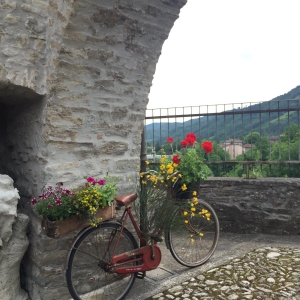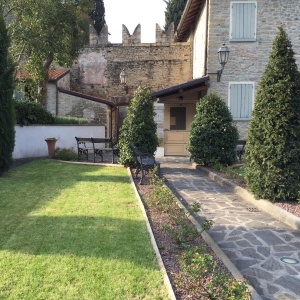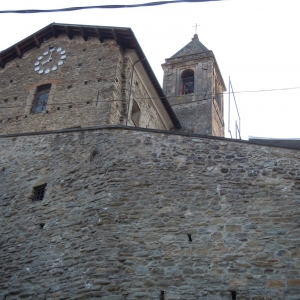Open today
Castello di Cusercoli
On the provincial road leading from Forlì to Tuscany, through the Campigna forest, stands the Castle of Cusercoli on an imposing spur of limestone rock along the Bidente valley, in the Municipality of Civitella di Romagna.Built in the Middle Ages, around the 12th century, and presumably on the foundations of a pre-existing fortified structure dating back to the late Roman period, it was initially inhabited by the Counts Ghiaggiolo, the first feudal lords of the castle until 1269 when Count Uberto's only daughter, Orabile Beatrice, going to marry Paolo Malatesta, known as "il Bello", brought the Castle of Cusercoli to the Lords of Rimini.
This is precisely the Paolo Malatesta famous throughout the world for his love story, sung by Dante Alighieri in the Fifth Canto of the Inferno of the Divine Comedy, with Francesca da Polenta, daughter of Guido da Polenta, lord of Ravenna, who married his brother Giovanni Malatesta by proxy. Paolo and Francesca, although brothers-in-law, fell madly in love. Her husband, Giovanni, surprised and killed them. It seems it was within the walls of the Castles of Ghiaggiolo and Cusercoli that their love story began and also where it ended in the tragic way we all know. An important historical fact remains: Paolo Malatesta was also Count of Ghiaggiolo when he was killed.The Malatestas were responsible for the first significant extension work carried out during the 14th century when, next to the initial fortification, a palace was built, also fortified, the feudal lord's residence.In the Torre della Meridiana, inside the Castle of Cusercoli, a room has been totally renovated for the permanent exhibition of extraordinary ceramic works. These are 14 polychrome ceramic tiles made in the mid-seventeenth century that represent the Stations of the Cross and are a source of pride for the local community. They are ceramic works of singular historical and artistic value and exceptional rarity because the entire nucleus of 14 tiles has survived intact to the present day. The history of these tiles is shrouded in mystery. The only known fact is that the tiles arrived in Cusercoli at the end of the 18th century, at the behest of Giovanfrancesco Guidi di Bagno, with the specific intention of placing them in the cells along the cemetery boundary walls, which enclose the small church dedicated to St. Emidio and the Purgatory Souls, dating back to 1788. There the precious tiles remained until 1994, when they were stolen by a band of thieves during the night and fortunately recovered within a few hours. It was precisely this event that, for the first time, raised new attention to the value and beauty of these works. The manner of the theft and the signs of centuries of exposure to the elements had severely damaged the ceramic artefacts. Following the discovery, the administration called for collaborations and deployed resources for their conservation recovery and full valorisation. Thanks to the intervention of the Institute for Cultural Heritage of the Emilia-Romagna Region, an articulated multi-year project was promoted, which included both an accurate restoration of the Stations of the Cross tiles and their copying. The complex intervention, coordinated and financed by the regional institute, was carried out in the participatory form of the worksite school. The original works can now be admired in an exhibition room of the Castle, while the copies, hardly recognisable from the originals, can be seen in the historic cemetery of Cusercoli, placed inside the sandstone cells of the Stations of the Cross, dating back to the 18th century.
The Castle of Cusercoli is historically part of the circuit of the Fortresses and Castles of Malatesta Romagna and is located in a virtual route that crosses several valleys and connects it with the system of fortifications located in the territories of Bertinoro, Castrocaro and Terra del Sole, Cesena, Dovadola, Forlimpopoli, Longiano, Meldola, Predappio and Roncofeddo.
Inside a restored wing of the castle, since 2005, some rooms have housed the "CAILab" archaeo-engineering laboratory of the Faculty of Engineering of the University of Bologna, Forlì branch. The laboratory carries out important studies for the application of modern engineering methodologies for the knowledge, conservation, restoration and use of Cultural Heritage.
Base Texts, credits: Sabrina Aleotti (Municipality of Civitella di Romagna);Antonella Salvi (IBC); Ilaria Colinelli, Debora Ranieri (Pro loco Chiusa d'Ercole).





